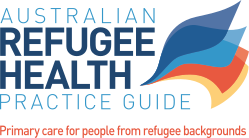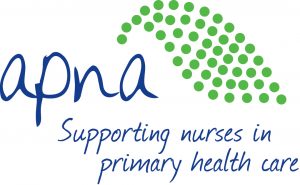Identifying patients from refugee backgrounds
Key points
Identification of people from refugee backgrounds, including people seeking asylum, is important so that healthcare providers can tailor their approach.
There are a number of indicators that a person may be from a refugee background. These include:
- country of birth
- year of arrival in Australia
- need for interpreter
- preferred language
- visa type
- referral source.
Overview
If a person speaks a language other than English and comes from a country that has a history of conflict and human rights violations, e.g. Afghanistan, Iraq, Sri Lanka, Iran or Burma (Myanmar), they are likely to be from a refugee background. A country of asylum or transit such as Pakistan, Malaysia, Thailand or Egypt can also suggest a refugee background. Country of birth is not necessarily an indication of ethnicity or religious background.
People from refugee backgrounds can also be identified by their visa number, which indicates the category of Australia’s Humanitarian program under which they arrived. This includes entrants with the following visa subclasses:
Offshore – Refugee
- Refugee Visa (Subclass 200)
- In-country Special Humanitarian Visa (Subclass 201)
- Emergency Rescue Visa (Subclass 203)
- Woman at Risk Visa (Subclass 204)
Offshore – Special Humanitarian Program
- Global Special Humanitarian Visa (Subclass 202)
Onshore Protection Program
- (permanent) Protection Visa (Subclass 866)
- Temporary Protection Visa (TPV) (Subclass 785)
- Safe Haven Enterprise Visa (SHEV) (Subclass 790)
People seeking asylum
People seeking asylum who arrive in Australia and subsequently apply for protection as refugees have different visa types and eligibility for services.
Those arriving with valid entry documentation (e.g. a student or visitor visa) are permitted to reside in the community while their application is considered and are provided with a Bridging Visa after their original visa expires.
- Bridging Visa A (Subclass 010)
- Bridging Visa C (Subclass 030)
- Bridging Visa E (Subclass 050 & 051)
People seeking asylum who hold a Bridging Visa E may have arrived without valid documentation prior to 2014. Those who arrived after this date were subject to transfer to Nauru and Manus. Also, some people who were transferred to Australia from regional processing centres for medical care will also hold a Bridging Visa E.
Visas are subject to change. For the most up-to-date information about visa types, see the Australian Government Department of Home Affairs:
- Refugee and Humanitarian Programme.
- Bridging Visas.
- People seeking asylum may also hold one of several identification cards.
See Asylum seekers.
Practice tip: Record country of birth, need for an interpreter, preferred language, date of arrival and visa number, in patient files to support care, particularly for people with special or complex needs.
People from refugee backgrounds may be referred by settlement and asylum seeker support services, refugee health nurses and services and/or specialised services for survivors of torture and trauma.
Considerations
People who have been in Australia for some time may not identify as refugees and may find questions about visa number details intrusive.
In some circumstances people from a refugee background may have a permanent or temporary visa (e.g. orphan, spouse, student, some people seeking asylum) that does not entitle them to Medicare, yet they may be unable to pay for healthcare services. These circumstances may require further advice and advocacy with local health and welfare agencies, and refugee and asylum seeker health services.




